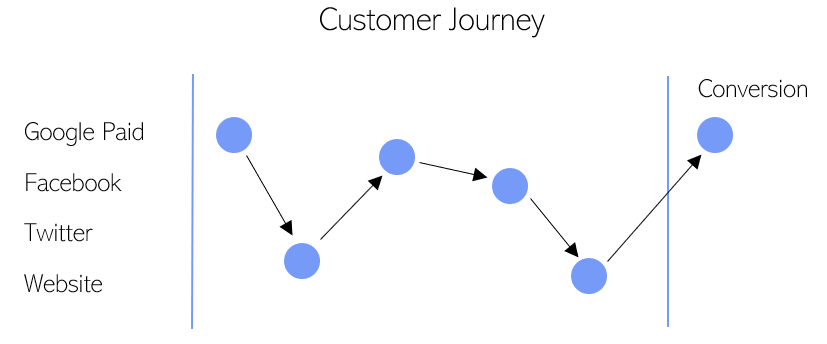Multi-Touch Attribution Guide: Why It Matters
What is Multi-Touch Attribution?
Multi-touch attribution is a measuring technique used in marketing to determine the value each touchpoint has in driving conversions in the consumer journey. The aim of multi-touch conversion is to determine which touchpoint should be credited for the conversions and then allocate more future spend to this touchpoint. By doing this, you can effectively acquire more customers.
First-Touch Attribution vs Multi-Touch Attribution
First-touch attribution gives full credit to the first touchpoint in the customer journey. This model is used to show how top-funnel marketing strategies generate bottom-funnel conversions.
This model is good for identifying what touchpoint in the journey the customer becomes initially aware of your business, but it ignores the other channels and touchpoints they may have interacted with as well. This model is mostly used to assess the acquirement of new customers.
Last-Touch Attribution vs Multi-Touch Attribution
As you could imagine, last-touch attribution is the opposite to first-touch attribution. It gives all the credit for conversions to the last touchpoint in the customer journey.
This model focuses solely on what drove the conversion rather than awareness, which makes sense on the surface, but it ignores the full customer journey up until that point and therefore you can make incorrect funding and optimising decisions.
Why is Multi-Touch Attribution Important?
There are many benefits to using multi-touch attribution models. The main benefit being that it can help you achieve a higher ROI as it pinpoints where you should allocate more of your marketing spend and the areas where you should spend less. This means your money isn’t being wasted on marketing that isn’t working and instead you are spending your money where you are getting your conversions.
Another benefit to using multi-touch attribution is that it is an effective way to measure the impact of your digital marketing efforts as it provides a personal view of your marketing. Seeing your marketing from a personal view means you can improve the journey for the customer and as a result get more conversions.
Different Multi-touch Attribution Models
There are different models of multi-touch attribution and deciding which one to use will depend on your business’s requirements and goals. Here are the most common models:
– Linear model
The linear model gives the same credit to each touchpoint in the customer journey for driving conversions. This model is good for understanding the customer journey as a whole, but it doesn’t give insight on how effective each touchpoint is at driving the conversion and therefore it doesn’t tell you which touch point should be allocated more of your budget.
– U shaped model
The U shaped model gives the conversion credit to both the first and last touchpoint of the customer journey, creating a “U” shape. This model demonstrates that not every touchpoint is equal and identifies which touchpoint kickstarts the customer journey and which one leads to the actual conversion at the end.
Although this model is more realistic in the sense that not every touchpoint is viewed as equal, it ignores the middle of the customer journey.
– Time decay model
In the time decay model, the credit for each touchpoint increases as it gets closer to the end of the customer journey and the conversion itself. This model focuses less on giving credit to the awareness stages of the customer journey and more on giving credit to what drove the conversion at the end.
This model is good for measuring results for marketing efforts that have short cycles like promotional campaigns, but it ignores the importance that awareness has in driving a conversion.
– W shaped model
The final common multi-touch attribution model is the W shaped model. This model spreads the most conversion credit across the first, middle and last touchpoints. These points are also referred to as discovery, lead capture and opportunity creation.
This model works best for more assessing complex campaigns, but it can be hard to clearly categorise each touchpoint into the beginning, middle or end of the customer journey.
How to implement multi-touch attribution
There are some general steps you can follow to implement multi-touch attribution:
- Collect dataYou want to collect general data about who is visiting your website and the how, where, when, why etc.
- Determine your KPIsWithout having an understanding on what your goals are in terms of conversions and performance, you will struggle to pick an attribution model that suits you.
- Acquire analytics softwareYou will need software that can analyse and sort the data you collect about your conversions so it is easier to read and gain insights.
- VisualiseLastly, you want to put this sorted data into a graph or chart that will help show you the success of each touchpoint in relevance to your chosen multi-touch attribution model.
If your business is looking for a Trusted Growth Partner to help you drive more conversions and sales, get in contact with us and book a FREE 30-minute consultation to hear how we can help you.














